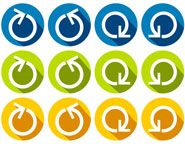Jeff Gallino shares his advice on the best way to prove Return On Investment (ROI) for an Interaction Analytics deployment.
First of all, managers should avoid what we call ‘boiling the ocean’. Using interaction analytics provides the ability to analyse all interactions between contact centres and customers (telephone, email, webchat, social media, etc.).
When people are first presented with this, they almost immediately think of 20-30 things to do with it. This is a big mistake.
Instead of taking on too much too quickly, a company should select one or two areas to focus on and use these to prove the value of using interaction analytics. This will enable them to get the proof ‘hurdle’ out of the way early on so that they can concentrate on maximising the benefits of using analytics.
Three possible areas to focus on to prove ROI are:
1. Compliance (making sure you mitigate the risk of being fined)
By focusing on compliance you can make an immediate difference. You can identify any areas of risk, develop best practices and be certain that all your agents’ interactions comply with legislation – and prove it if asked.
There are two ways in which you can minimise or eliminate these risks. First, you can analyse every call or contact with a customer to identify where your compliance procedures have not been followed.
As part of this you can also identify the words or language that is normally associated with these non-conformances. This will help you understand your risk exposure and enable you to put in place the training to ensure that the entire agent team understands what is required to be compliant.
Identifying language associated with risk provides another advantage. Manual sampling of recorded calls provides little or no prevention of non-compliant behaviour or protection against litigation. But a live interaction analytics solution can provide the ability to monitor in-progress calls for the presence or absence of specific language that relates to a breach in compliance and alert the agent or a supervisor before the situation escalates.
2. Automation and efficiency
Automation and efficiency focuses on cutting the cost of customer interactions and optimising agent performance.
By focusing here you can identify how to make a variety of improvements and realise savings. These include: lowering agent turnover, reducing handle time and driving more self-service. Most people concentrate on this first – as it’s easiest to understand – making calls shorter and more effective.
Automation means that quality assurance (QA) staff can be redeployed somewhere else – such as training agents to make behavioural changes.
3. Revenue
Looking at revenue involves using customer interactions to improve processes and increase sales.
By gaining a better understanding of customer needs and preferences starting at an individual transaction level, you will be in a better position to identify opportunities to up-sell or cross-sell.
This will also help to identify which approaches deliver a better conversion and close rate, so that these can be shared across the team and you can identify which agents need extra training.
A 1% uplift of top-line revenue pays more or less for any analytics tool, not to mention improvements in the overall customer experience and contact centre performance.

Jeff Gallino
To sum up, it is best to select the area which fits the needs of your business most.
If you run a collections business and you want to satisfy the FCA that you are fully compliant, then proving compliance would be your logical choice.
If you want to demonstrate how your contact centre delivers an excellent customer experience and contributes to sales, then proving how you increase conversions would work best.
Once you have demonstrated value in one area, you can continue to work with your solution to unlock additional benefits.
With thanks to Jeff Gallino at CallMiner
Author: Megan Jones
Published On: 24th Feb 2016 - Last modified: 22nd Mar 2017
Read more about - Archived Content, CallMiner































